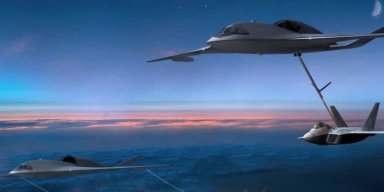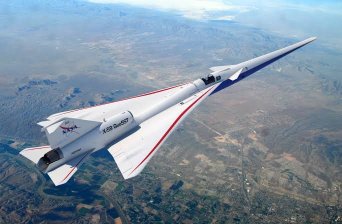Next Generation Military Logistics

Article by Shantanu K. Bansal
From 5th Generation Transporters to nuclear powered Cargo Fleet these technologies have the potential to change the concepts of military operations.

5th Generation Transporter
There has been great endeavor to develop fifth generation fighter aircrafts. The development of ‘low-observation technology’ has greatly affected the development of Ground Based Air Defence Systems (GBADS) for a period of decade or so until the S-400, lasers and DEWs along with strong HF radars came into picture effectively challenging the concept.
Taking the advancement in stealth technology a step ahead it is reported that US which has a record of innovating the battlespace like no other country is now focusing on ‘heavy stealth revolution’ for low observable tankers, transports, bombers and ‘flying sensor and communications trucks’ (E.g. AWACS and JSTAR).
It was reported that USAF was working on a stealth tanker named as KC-Z which has been put on hault due to fiscal constraints. The Drive reported that the USAF actually investigated what it might take to transform the B-2 stealth bomber, another Northrop Grumman product, into an aerial refueling platform, though it decided not to pursue that plan and has never made details about that study public.

Transport UAV
Unlike a 5th Generation strategic aircraft which is still on the drawing board the concept of transport UAV has been effectively realised.
China has become world’s first country to fly an unmanned cargo plane. The new AT200 cargo drone, which is based on a PAC P-750 XSTOL turboprop aircraft that could provide rapid cargo delivery to remote islets in the South China Sea without airstrips, a report by Xinhua news agency said.
The Chinese PLA recently tested drone delivery of ammunition and blood supply to a forward post under simulated attack. During the drill, officers and soldiers used unmanned transport aircraft to conduct continuous airdrops, decentralized delivery, fast-roping delivery, wounded evacuation, etc.
U.S. Army military logistics experts are reaching out to industry to find companies able to prototype an unmanned aerial vehicle (UAV) cargo aircraft able to transport as much as 600 pounds of military supplies like ammunition, water, and food to forward-deployed warfighters engaged on the battlefield.
The Airbus VSR700 helicopter UAV has a maximum takeoff weight of 1,543 pounds, and empty weight of 882 pounds, and can carry as much as 661 pounds of fuel and cargo. It can fly as fast as 100 knots, as high as 13,123 feet, and has a maximum range of 435 miles.

Supersonic Transport
As per Wikipedia to date, the only SST to see regular service have been Concorde and the Tupolev Tu-144. The last passenger flight of the Tu-144 was in June 1978 and it was last flown in 1999 by NASA.
However, NASA has been refocusing its research on a new type of SST. NASA along with Lockheed Martin is working on experimental supersonic aircraft called X-59 Quiet Supersonic Technology (QueSST).
A step ahead, Boeing have released a model of a hypersonic plane. Boeing is working on a Hypersonic plane which will be traveling at Mach 5.
These technologies are mostly in civil realm but Russia is developing PAK-TA supersonic air freighters (formally known as Ilyushin Il-106 Slon) for military role capable of moving a strategic unit of 400 Armata tanks, with ammunition, to anywhere in the world.
Reportedly, it will fly at supersonic speeds (up to 2,000 km/h) and will boast an impressively high payload of up to 200 tons. It will also have a range of at least 7,000 kilometers.capable of moving a strategic unit of 400 Armata tanks, with ammunition, to anywhere in the world.

Rocket Transport
With the possibility of future conflicts to be fought on multiple battlegrounds spread across the world, there will be a need for a prompt supply of weaponry from the actual base lying thousands of miles away from the combat zone. The US is planning to introduce Space rockets to replace C-17 globemaster in future.
The US Transportation Command (TRANSCOM) has forged a partnership with Elon Musk’s Space X and Exploration Architecture Corporation (XArc), which offers expertise in space station and spaceport design.
They are in the process of building a prototype for a reusable a rocket capable of carrying the heavy load while flying at speeds of 7,500mph.
Pertaining to the US Air Force fact sheet, the large high-wing, four-engine, T-tailed C-17 has a maximum payload of around 82 tons and a maximum speed of 520 mph.
In comparison, if the proposed cargo rocket built under the partnership wants to trump the C-17 in delivering cargo anywhere across the world within the stipulated hour’s time, it would need to travel at an average speed of 9,000 miles an hour. Experts believe it will probably be decades, not a few years before it becomes cost-effective.

Nuclear Powered Cargo Fleet
Acccording to a research paper we have already been using small nuclear power plants on board more than 140 submarines and some icebreakers since the 1950s. These have been quietly plying the oceans for a good 65 years with no accidents.
The nuclear power stations used in submarines are physically very small: under six feet wide by 15 feet tall. And at between 10 and 40 megawatts (MW), they are also smaller in capacity than what would be needed for a cargo ship.
It takes about 150 MW to power a typical cargo ship, using diesel generators which are major cause of pollution. Though currently this technology which is also ecofriendly has not captured a significant share of the market, it could be the way of the future.
NS Savannah was the first nuclear- powered merchant ship. She was built in the late 1950s at a cost of $46.9 million. The world’s only remaining civilian nuclear-powered cargo ship is the Russian Sevmorput.
Of late, there has been talks on nuclear powered trains, planes and automobiles. Most significantly, trains have been used for majority of military logistics around the world. Not to forget that the improved battery technology will also come with range of logistics advantage.


